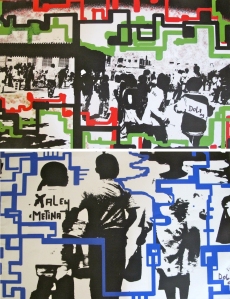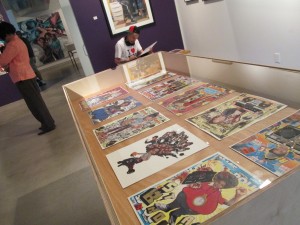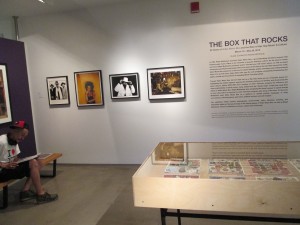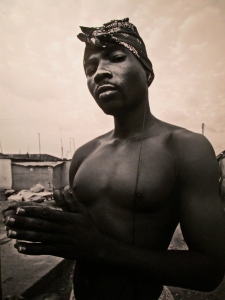Originally written for ACCRA [dot] ALT Radio
By Robin Riskin

SANFORD BIGGERS: I am actually a Japanese artist wearing the mask of a Black man manufactured by a White person to look like your idea of a rapper.
The Brooklyn Museum was buzzing on Thursday night, May 24. Creatives from all over New York City were decked out in their flyest Afro-prints and chunky glasses, gathered for the screening of The Triptych, the latest documentary film series by Terence Nance, presented by Afro-Punk Pictures and the Weeksville Heritage Center.

WANGECHI MUTU: The Kikuyu religion that spoke to me was overtaken by Christianity. You had to be Christian in order to be a part of modernity.
The Triptych highlights the work of artists Sanford Biggers, Wangechi Mutu, and Barron Claiborne. The twenty-minute assemblages of interviews, artworks, photographs, text, and abstraction blur the line between life and art, reality and representation. The three profiles, works of art in themselves, are clever, challenging, and laugh-out-loud funny.
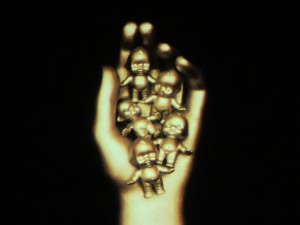
BARRON CLAIBORNE: I know how people see me and I know I’m nothing like it. Blackness is an illusion.

BARRON CLAIBORNE: “Person” comes from “persona” which means mask… I’m not really at war with anything. I don’t really care. I just want to do what I want.

BIGGERS: Black black black quack post-black. The way blackness is scrutinized on a daily basis, it fucks your head up. It’s not about the mask, but what’s behind it. The duality ingrained in society and the various avatars within yourself.
The conversations invite us to explore the experiences and observations behind Biggers’s subversive performance and installation pieces, Mutu’s mythical collage creatures, and Claiborne’s beautiful and wry photographs. The shorts are the first in what promises to be a vibrant and significant series.
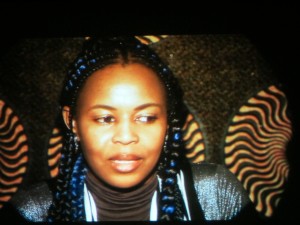
WANGECHI MUTU: My creations are mythical, magical, beyond human.

BIGGERS: As an artist, I find history like a sculptural material – malleable – the meanings reassembled to make new features.
Nance, Director, and Claiborne, Co-Director, conceived the project together and expanded to include Mutu and Biggers. With Shawn Peters as Director of Photography, they will continue to chronicle the work, lives, and practices of some of the freshest visual artists today.

TERENCE NANCE: When you need something done, you often look to hire people, but you forget that your friends are capable, creative people, and often make the best team.
Nance and Peters have collaborated on a number film and music video projects in the past, including the short Native Sun (2011), a 20-minute audio-visual treat shot in Ghana with Ghanaian hip hop artist Blitz the Ambassador. The two also directed the recent Sundance premiere, An Oversimplification of Her Beauty. The Triptych offers a bit more narrative than these abstract delights, but is equally wacky, magical, and visually delicious.
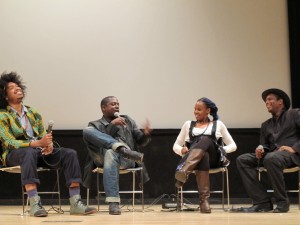
NANCE, BIGGERS, MUTU + CLAIBORNE CHOP SHOP
After ‘The Triptych’ films closed, the wit and humor continued through a Q&A led by journalist and writer Esther Armah. The group of four friends could not stop laughing, even while engaging complex racial and socio-historical theory. They touched upon commonalities in the way they embrace grayness and reject binaries of black and white. They addressed the strong family influences that have pushed them in their work, and the challenges they still face in the art market despite their success.
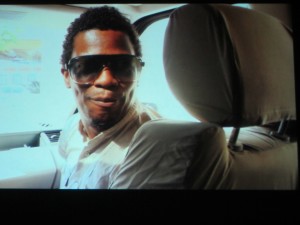
BARRON CLAIBORNE: People used to think I was an old white man. Then when they saw who I was, they started giving me particular assignments. You see, as a Black person, you are not seen as a universal human being.
Claiborne said that while artists like Damien Hirst have mastered how to monetize their work, many of those who have been labeled as ‘Black artists’ are still figuring it out. As the audience geared up for applause, Claiborne winked, “Now everyone should pay me $100 on their way out, meet you in the lobby.”

FILMMAKER SAM KESSIE x RAHIEM OF GRANDMASTER FLASH
As if the three gorgeous films and a brilliant Q&A were not enough, the after-party did not disappoint. The artists and filmmakers stuck around to chat with audience-members, while Eclectic Method projected rap video remixes against the glass entrance. Claiborne kept his camera going the whole night, making live art portraits in front of his signature bright print screen.

CLAIBORNE CAPTURES YASIIN BEY aka THE ARTIST FORMERLY KNOWN AS MOS DEF
Celebrity spottings included Mos Def a.k.a. Yasiin Bey, Rahiem of Grandmaster Flash, British Ghanaian filmmaker Sam Kessie, and Rwandan electropop singer Iyadede a.k.a. “that girl from Africa.”
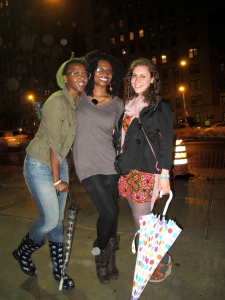
IYADEDE, SAM KESSIE + ROBIN RISKIN POSE UP
Good thing Brooklyn’s finest photographers were out to capture the fabulous evening. It was one dope night of art, film, and music…and should be just the first of many.


